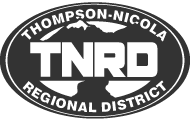We Work with Awesome People






In the early days (think pre-internet), access to information was limited. Organizations published, but it was less frequent, more expensive. Content was often informative in nature, though with a pretty heavy-handed sales bent to it.
Fast-forward to the information era, and organizations large and small have access to tools that make publishing as simple as writing a letter once was. We have access to a larger audience, and also a variety of mediums; video, graphics, whitepapers, and blog posts are available to everyone, meaning that anyone can publish, and anyone can consume.
People have come to expect that an organization will have resources to help them in their purchase decision, especially in complex sales scenarios.
To produce good content, brands will need to get out of the mindset of old-school publishing. No, you generally can’t ask for the sale in that piece of content. No, it’s not an opportunity to list all of the benefits of your product or service. It is however an exercise in reflection and creativity, and an opportunity to build trust.
To publish good content, you should ask yourself the following questions before each and every project:
With the answers to these questions in mind, you can begin to formulate a plan for creating valuable content for your customers, prospects and referral sources. Once you’ve arrived at some concrete answers, you can move on to content creation.
Below are seven tips to help your content work for you:
Don’t Be Everything to Everyone
Your content shouldn’t try to be everything to everyone. Identify your niche markets, determine what their needs are, and do your best to meet those needs in the content format they prefer, on the platforms they spend the most time. It sounds simple, but it will require a fair bit of sleuthing and planning in advance.
If you’ve never engaged in the process before, here’s a handy chart to help you navigate the process.
Once you’ve done all of this, the next step is maintaining consistency.
Focus on What Matters to You AND Your Customers
It is equally important to address topics that are strategically important to you as a business, as it is to address ones that important to your customers. Focusing too much on the needs of your customers without paying attention to what will benefit your business will result in ineffective content. Focusing too much on your own needs will result in content that doesn’t resonate with your audience. A balance is essential.
Have a Clear Purpose and Call to Action
Start with a goal in mind, and be as specific as possible when identifying that goal. Each piece of content should have a goal, whether it’s more newsletter subscribers, a share with a specific hashtag, or an event registration. This goal should be baked into your content in a manner that doesn’t seem out-of-the-blue, or too pushy. Your content should be related to the call to action without demanding it. One ‘ask’ is all you’ve got, so make the content compelling enough to make people interesting in taking a next step.
Quality over Quantity. Always.
There is a lot of content out there. But the way to get seen isn’t necessarily by publishing more of it. The better the quality of your content, the more likely it is to stand out. Focus on every little detail. The words you use, the formatting, the colours, and for goodness sake, the thumbnail image. These small details make a big difference. If you’re unsure about whether your content is exceptional, it probably isn’t… yet. But you’ll know it is when you take a step back and smile to yourself. Then you know you’ve got something good.
Don’t Stop at Creation
Ok, you’ve got some stellar content. Now you might hit the publish button and walk away, maybe checking some basic metrics after a few days. But forgetting about activation is a critical mistake so many make. Organic reach, as you’ve probably heard, is increasingly hard to come by these days. As such, you’ll need to come up with an activation plan. There are lots of options out there, both paid and unpaid, including social media ads, influencer outreach, partnerships, and email. To make your content work for you, you’ll need to invest in its reach.
Be Consistent and Persistent
Don’t be sad if your content wasn’t as well received as you had hoped. It takes a lot of time, effort and resources to reach critical mass (the point at which you are receiving more engagement with each and every piece you publish). Consistency and persistence will get you there. Consistency dictates that you publish original or curated content at regular intervals. It may be hard at first, but psychologists have found that it takes only takes about 21 days to form a new habit. Keep that in mind if it feels impossible at first. That will change.
Align Your Measurement with your Goals
Now, after investing all this time and money, what’s the return? The answer to that question is, it depends. Though I recognize that the primary function of marketing has historically been to drive sales, that role is changing, fast.
Take the oft-quoted prediction for example, that CMOs are expected to outspend CTOs on technology by 2017. Marketing is no longer in a sales support role. It’s also about business strategy, business intelligence, relationship management, workplace culture, and even recruitment.
As such, the return of a great content marketing plan will entirely depend on your goals. If your goal is sales, financial outcome metrics and conversions will be a great way to assess return. If your goal is to build and maintain a loyal workforce, satisfaction surveys and employee reviews are an opportunity to quantify feedback. If your goal is customer service, tracking inquiries over time will help you assess your effectiveness.
And it’s completely normal to have more than one goal! As long as they’re not competing with one another, and they can be executed simultaneously with relatively equal effectiveness.






Made in Canada - © 2024 Fresh Brand Marketing - All Rights Reserved.